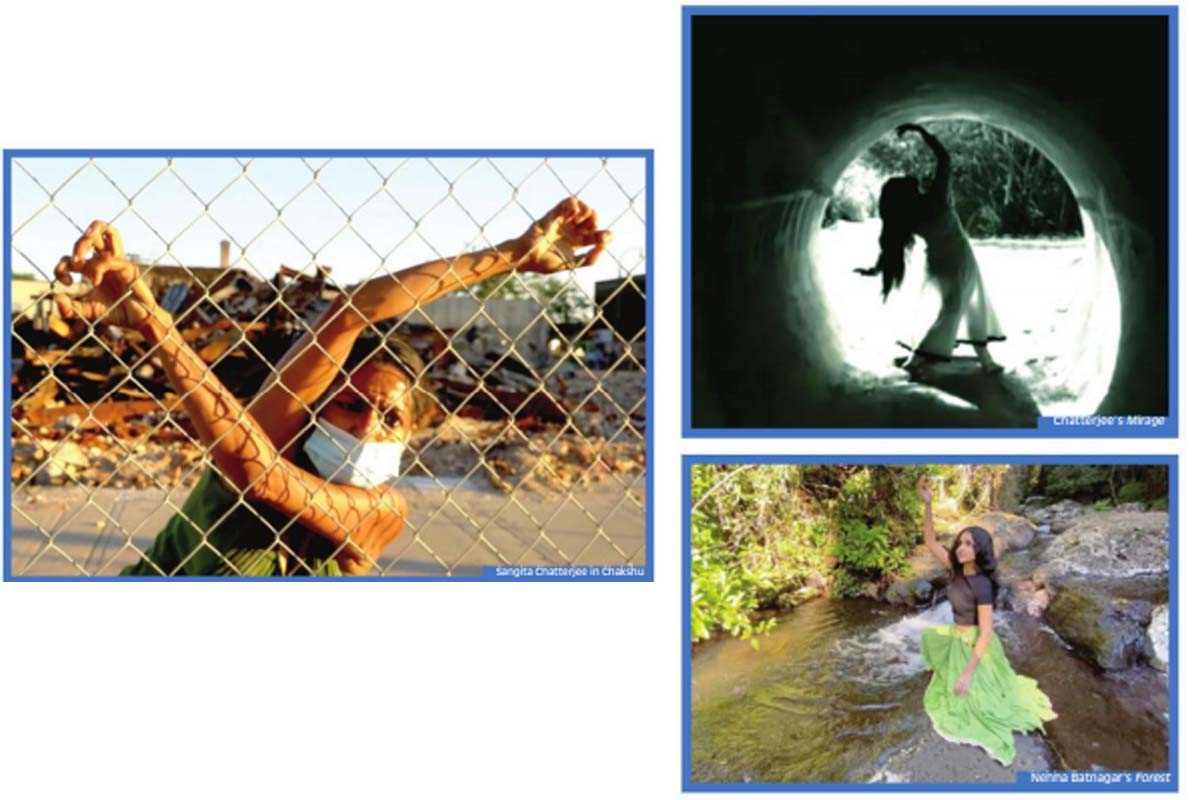One savours dance through the lens of one’s eyes. Then there is the lens of the camera, which captures the beautiful movements of dance so that one can look at them anytime, anyplace. How far the analogy of these two varying lenses is comparable is a good question.
A recent production, Chakshu, however, referred to the role of the camera lens in transforming visual bodies into televisualised forms. Capturing a narrative in the language of dance through the camera can help store the piece to be seen at a later time.
Advertisement
It makes us question the environment of dance and takes into account the world around us. Screen dance – an independent art by itself and a standalone future vertical of dance – through the perspective of the camera was the theme explored at length by Sangita Chatterjee, founder of Kalpataru Arts, in collaboration with Arshiya Sethi’s Kri Foundation.
Together, they came up with a three-day online event through a curation of dance films/screen dance/video dance and panel discussions with dance filmmakers, choreographers, dancers and patrons.
It was an ambitious project carried out with success. Kalpataru Arts is a socio-cultural organisation founded in 2013, by Chatterjee, a Kathak exponent, to promote Indian art and culture and create a transparent and healthy environment for art to evolve. It conducts festivals of dance and music, seminars, workshops, interview series and is now also committed to promote dance films.
Kri Foundation has helped the genre foster for almost two decades under its DanzLenz vertical. The curatorial vision for the festival, Chakshu, stressed on ideas that dance can also be filmed beyond traditional performative spaces and performance structures.
That way, the form will have a greater mobility and longer shelf life. The pandemic has pushed the relationship of dance with camera to the foreground. The second idea upheld collaboration, mentoring and handholding.
The two organisations not only promoted partnerships between themselves but also facilitated intergenerational collaboration.
Their mentoring, support and encouragement was reflected in the inclusion of films by first-time filmmakers. And the third idea delved into the spectrum of the films curated. Day one saw generic dance films of great beauty while day two featured films made during the pandemic.
Day three included films made especially for the festival, by five classical dancers of the younger generation. Aksharakaram by Justin McCarthy, dancer, and Jaya Jaitly, founder of Dastakari Haat Samiti, was presented under the direction of Kalpana Subrahmanyam.
Nikita Maheshwary’s Home, Article 19, Lines and Eve Teasing were films with a strong political subtext. Nrityagram: For the Love of Dance by Nan Melville and Nature of Nescience by Shilpika Bordoloi were screened on day one.
The presentations of day two included Red Stamp by Sanjukta Wagh and Benish Mahmood. Nehha Batnagar – director of Forest and Mothers Love – consciously chooses the outdoors for her performance films as she finds its grandeur both inspiring and humbling.
Her works on animals to reach a larger audience had an interesting and different flavour. Chatterjee’s Quest: A Lockdown Diary of a Dancer, a short film on dance created during the pandemic to address the pressing question of a dancer, “Why I dance?” was thought provoking.
It was an experiential film made as an organic process of healing, through dance and for dance, during the pandemic.
WithinFrom Within by Kathak exponent Aditi Mangaldas, who dances within walls for a purpose, produced the film as a fundraiser for dancers in need during these difficult times. It was an empathetic gesture. Dastak by Ananya Chatterjea and Darren Johnson, filmed outdoors at the Twin Cities – Minneapolis and Saint Paul – is a dance film made in the wake of George Floyd’s death, exploring the brutalities on Native Americans and the crisis of homelessness.
Along with Grapple, conceptualised by Santosh Nair and produced by Battery Dance Company, day two concluded.
The third day showcased Andals Garden, a one-of-its-kind production, and Boxed, both curated by Anita Ratnam.
Douglas Rosenberg as a professor of video/performance/installation and chairperson at the art department, University of Wisconsin, brought in a rich experience to the panel session. His film, Circling, was screened at the event.
Jam Upload Download Upload Jam (2020) by Sumedha Bhattacharya and Divine Dews, made especially for the festival, by Bharatanatyam dancer Pavitra Krishna Bhat are also worth mentioning. Sakhi He… An Emovere by Anwesa Mahanta, also made for Chakshu, was presented as a film narrative through dance reflecting on multilayered thoughts flowing like a stream of consciousness in a series of dance movements set to a cyclic pattern in varied contexts, in Sattriya style.
It explored the concept of Sakhi, providing glimpses of the celebration of Sakhitwa, a prime element in the range of Navadha Bhakti propounded by saint-poet Srimanta Sankaradeva.
Drawing upon a composition by the Bhakti poet Madhavadeva, the film oscillates between the emotive layers latent in the text and the vivid moods of a contemporary mind. Raftaar Karo Kam by Prachi Saathi, Eyeconic Tales of Love by Swapnokalpa Dasgupta and Mirage: A Lust for Life by Chatterjee were also original creations exhibited at Chakshu.
Everything that one chases in life ends up as a mirage though it still propels, motivates and encourages one to push forward, break limitations and keep pressing. It holds an element of hope. Both Sethi and Chatterjee did a commendable job in presenting dance lovers with this festival during such stressful times.
The writer is a senior dance critic.











